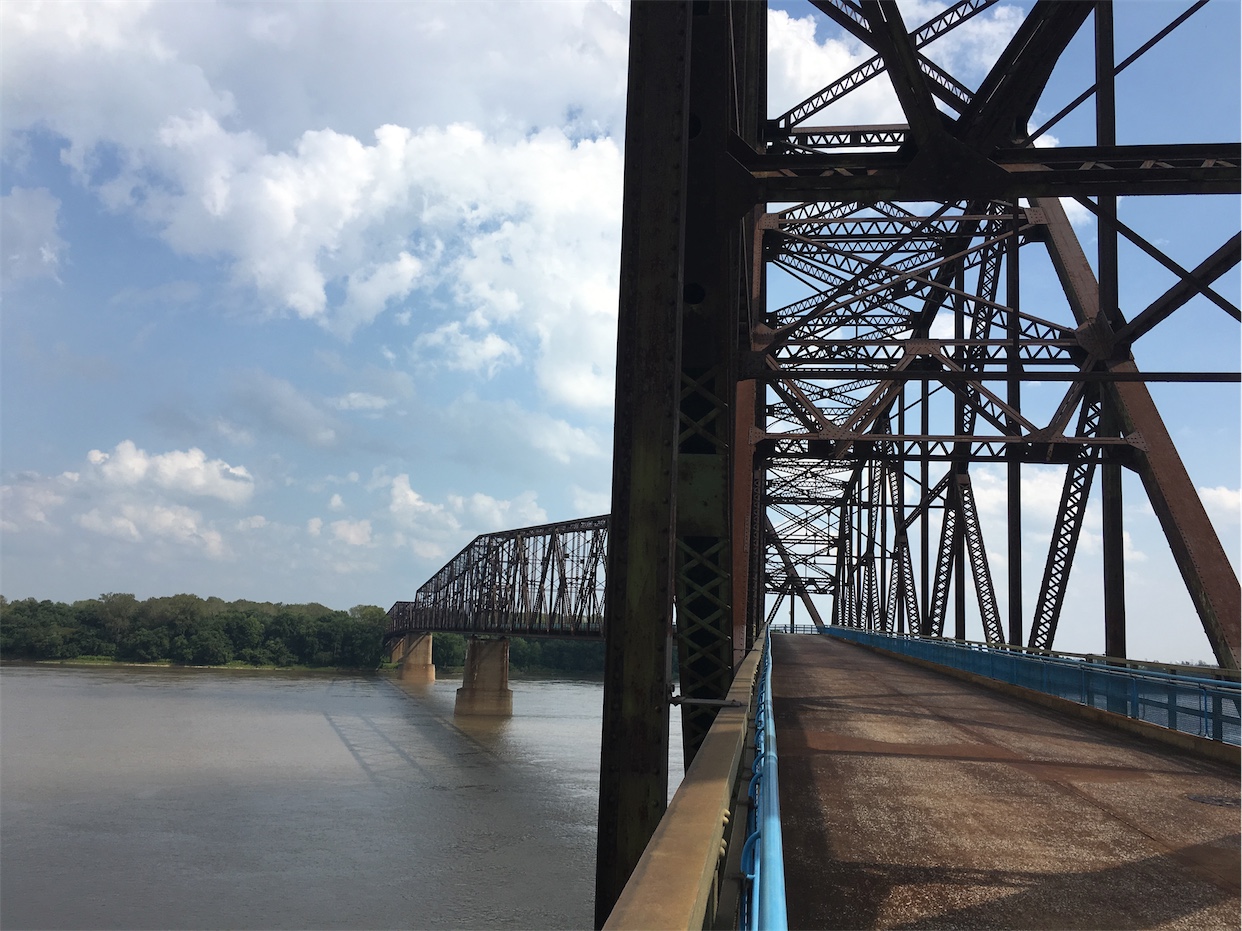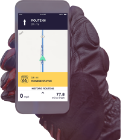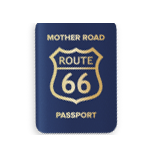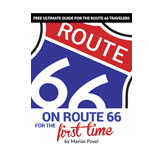FAQ
- Avoid the interstate and travel on historic Route 66 only with turn-by-turn Route 66 Navigation app for smartphones
- Purchase Route 66 Passport before your Route 66 trip. Click here
-
Do you prefer paper maps?
Try McJerry's EZ 66 Guide Book
Random point of interest

Old Chain of Rocks Bridge
Built in 1929 as a St. Louis bypass toll bridge, this cantilever through truss bridge across ...
DetailWhich Route 66 alignment do I pick?
In the context of Route 66, an alignment is an actual path that was Route 66 at a given time. Route 66 got “realigned” (re-routed) many times throughout its existence. These changes created multiple Route 66 alignments over time. Today, in quite a few areas, one can choose between multiple of these alignments that are still options to be driven or explored today. These different alignments are in various states of maintenance, accessibility, and continuity. Some will still be well maintained and easy to drive, while others dead-end onto missing bridges or were cut off up by Interstates that interrupt abandoned alignments.
The most famous alignment will be the one that was named Route 66 in 1926. But it is typically also the most difficult to retrace today as it is the most interrupted into dead-end sections, reclaimed by nature (many of the oldest alignments were never even paved), private property once again or even submerged. Still, retracing the still accessible sections is possible, fun, and quite time-consuming in most areas for those so inclined. In many areas, it’s readily drivable.
The least famous alignment is in many cases the very last alignment Route 66 ever had: The dreaded Interstate. In many places, Route 66 got co-signed on the Interstates in the years before it was decommissioned, bypassing the town, the businesses and all the fun in exchange for a faster pace. Tip: avoid picking the Interstate if you have another option, it’s boring, there’s nothing to see, and you can’t even stop should you see something.
Making the choice
Choosing the right alignment should be done based on multiple parameters, including:
- Your personal preferences
- The vehicle you drive (e.g., a road-hugging sports car might not like potholes on alignments that stopped receiving maintenance for the last 70 years, your big bike might not be up to gravel roads, etc.)
- The weather: Even a Ford Model T, designed for muddy roads, could get bogged down on Route 66 in the early years (e.g., the infamous Jericho gap). Similarly, roads with a gravel or dirt surface are a poor choice to drive when it rains or when there is merely a chance of rain. Even your 4×4 SUV can get stuck on some of those lonely roads.
- The roadside attractions: If you seek old, surviving roadside businesses: they are mostly concentrated on the last alignment of Route 66 prior to the Interstates as the businesses that existed prior to that, moved with Route 66 to where their customers were driving. If you seek old infrastructure elements such as bridges or their remnants: they are mostly on the oldest alignments. In fact, quite a few predate Route 66’s birthday as Route 66 was created by naming already existing roads and their existing infrastructure to US Highway 66.
- The actual condition of the road: Conditions change all the time. Even a nearly forgotten section might suddenly see maintenance. Or the opposite can happen: even the best-maintained road could develop a massive washout.
- Time: driving a long way on a difficult to navigate road to find a torn out bridge or dead-end can be a lot of fun, but if you’re in a hurry, this is nothing for you as it can consume many hours. Similarly, progress on a dirt road is far slower than on a 4-lane more recent alignment.
In the end, which alignment you take is a personal choice. It’s as good an excuse as any to go back another time and take on one of the other alternatives. Some areas have quite a few choices, giving more options to explore.
It’s essential to remain flexible and adapt to local conditions. Remember, you’re the one on-site, seeing the current circumstances, and know the capabilities of yourself and your vehicle. Don’t simply follow instructions in books or websites blindly.
The easy solution
If you only have limited time and aren’t inclined to do much exploring on your own or simply want to follow a guide, follow the EZ66 guide. It points out a simple, easy to follow, perfectly suitable for first-time roadies, alignment all along the way from either Chicago or Los Angeles/Santa Monica to the other. Even seasoned Route 66 fans still use their copy as a reference to keep them on track.





